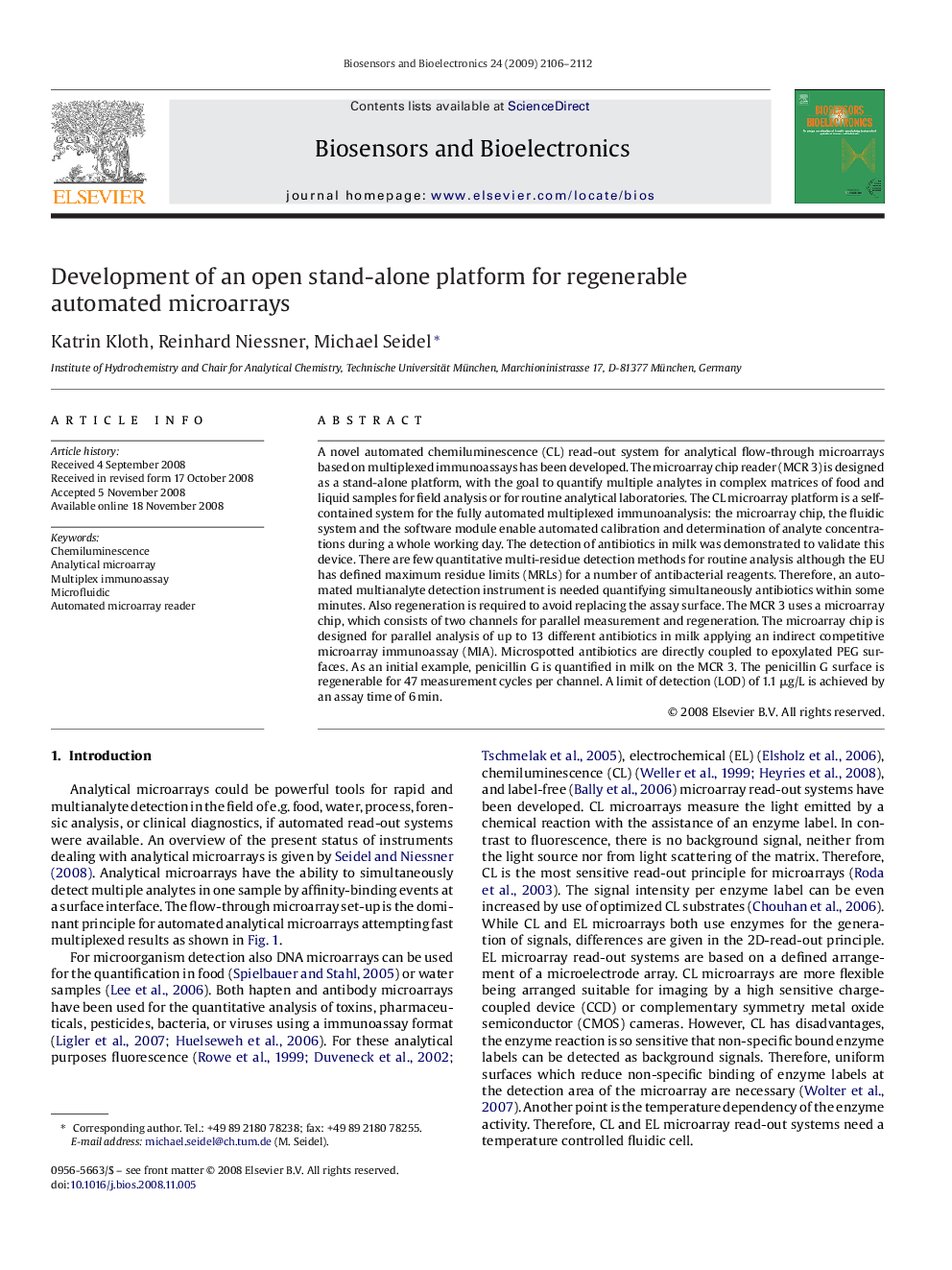| Article ID | Journal | Published Year | Pages | File Type |
|---|---|---|---|---|
| 869770 | Biosensors and Bioelectronics | 2009 | 7 Pages |
A novel automated chemiluminescence (CL) read-out system for analytical flow-through microarrays based on multiplexed immunoassays has been developed. The microarray chip reader (MCR 3) is designed as a stand-alone platform, with the goal to quantify multiple analytes in complex matrices of food and liquid samples for field analysis or for routine analytical laboratories. The CL microarray platform is a self-contained system for the fully automated multiplexed immunoanalysis: the microarray chip, the fluidic system and the software module enable automated calibration and determination of analyte concentrations during a whole working day. The detection of antibiotics in milk was demonstrated to validate this device. There are few quantitative multi-residue detection methods for routine analysis although the EU has defined maximum residue limits (MRLs) for a number of antibacterial reagents. Therefore, an automated multianalyte detection instrument is needed quantifying simultaneously antibiotics within some minutes. Also regeneration is required to avoid replacing the assay surface. The MCR 3 uses a microarray chip, which consists of two channels for parallel measurement and regeneration. The microarray chip is designed for parallel analysis of up to 13 different antibiotics in milk applying an indirect competitive microarray immunoassay (MIA). Microspotted antibiotics are directly coupled to epoxylated PEG surfaces. As an initial example, penicillin G is quantified in milk on the MCR 3. The penicillin G surface is regenerable for 47 measurement cycles per channel. A limit of detection (LOD) of 1.1 μg/L is achieved by an assay time of 6 min.
